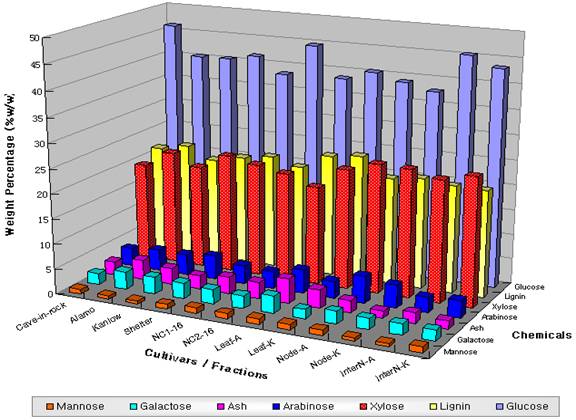
BIOMASS PROCESSING
![]()
Rapid Biomass Chemical Analysis In order to overcome the disadvantages of traditional wet chemistry approach, this study was targeted at using Fourier transform (FT)-near infrared (NIR) spectroscopic techniques to fast analyze the biomass chemical properties. Cornstover and switchgrass were two major biomass materials investigated in this study. Carbohydrates, in terms of glucose, xylose, galactose, arabinose, mannose, are of great interest to ethanol production. Lignin is important to bio-power industry, and ash is associated with the slagging problem. Therefore, these seven chemical constituents were focused on and models for predicting these constituents based on FT-NIR spectra were developed. This project’s results of chemical analyses for switchgrass are shown below:
|
| |
||||||
| |
||||||
|
|||||||||||||||||||||||||
| |
|||||||||||||||||||||||||
| |
|||||||||||||||||||||||||
| |
|||||||||||||||||||||||||
| |
||||
| |
||||
| |
||||
| |
|





